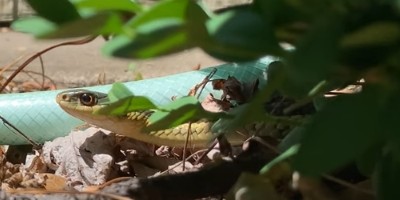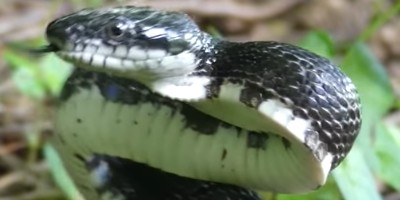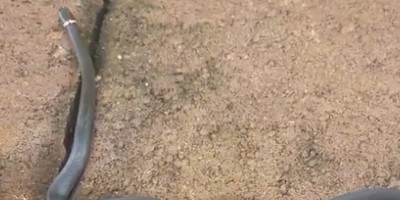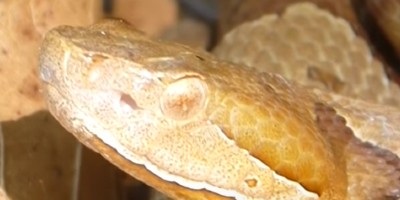
Welcome to washingtondcsnakes.com! I am David, a snake enthusiast living in Washington DC, DC. Many people don't know that Washington DC is in fact full of snakes! You just need to know where to find them - they can often be shy and elusive. Some DC snake species are more common outside of the city limits, in different parts of District of Columbia County DC, but many types of snakes are indeed common in the more urban parts of Washington DC. This guide is meant to help educate you about the beautiful snakes of Washington DC, and to help you identify the most common snakes of Washington DC, as well as the venomous snakes of Washington DC that you should learn to recognize and avoid. If you want more detail, click here for my complete list of ALL snake species in Washington DC. Remember the following:
- Most snakes of Washington DC are harmless and don't want to encounter you
- Venomous snakes exist but are uncommon in Washington DC, DC
- Snakes eat rats and mice and are a valuable part of the DC ecosystem
- Never kill a snake - if you leave a snake alone, it will leave you alone.
Common Snake Species in Washington DC
 Eastern garter snake:
The usual size of the eastern garter snake is around 19-26 inches, however, sometimes the length reaches as much as 49 inches. The one feature that sets these snakes apart from other snakes is the presence of three strips on its body; the stripes are bright yellow and standout on the eastern garter snake's dark body. There a few variations when it comes to patterns, some have checks on their bodies along with light-colored stripes. When it comes to their other body parts such as their belly, it is light-colored in shades of yellow and white. These snakes are often confused with ribbon snakes but garter snakes are much thicker and not as slender as ribbon snakes and additionally, ribbon snakes do not have the black lines that garter snakes have on their lips.
Eastern garter snake:
The usual size of the eastern garter snake is around 19-26 inches, however, sometimes the length reaches as much as 49 inches. The one feature that sets these snakes apart from other snakes is the presence of three strips on its body; the stripes are bright yellow and standout on the eastern garter snake's dark body. There a few variations when it comes to patterns, some have checks on their bodies along with light-colored stripes. When it comes to their other body parts such as their belly, it is light-colored in shades of yellow and white. These snakes are often confused with ribbon snakes but garter snakes are much thicker and not as slender as ribbon snakes and additionally, ribbon snakes do not have the black lines that garter snakes have on their lips.
 Eastern rat snake:
These rats were previously called black rat snakes. Their size varies from 3.5 feet to 7 feet. Eastern rat snakes have visible shiny black scales on their backside and their bellies are fairly light-colored along with their throat and chin which are white. One interesting physical feature about the eastern rat snake is its head which is prominently wider than its other body parts. Eastern rat snakes have their unique way of reacting to a predator; they emit a very foul odor under threatening circumstances. The smell can be described as the odor of poison. These snakes also take part in brumation during the winters. Brumation is very much alike to hibernation except the eastern rat snake still wakes up to do a few activities here and there such as drinking water.
Eastern rat snake:
These rats were previously called black rat snakes. Their size varies from 3.5 feet to 7 feet. Eastern rat snakes have visible shiny black scales on their backside and their bellies are fairly light-colored along with their throat and chin which are white. One interesting physical feature about the eastern rat snake is its head which is prominently wider than its other body parts. Eastern rat snakes have their unique way of reacting to a predator; they emit a very foul odor under threatening circumstances. The smell can be described as the odor of poison. These snakes also take part in brumation during the winters. Brumation is very much alike to hibernation except the eastern rat snake still wakes up to do a few activities here and there such as drinking water.
 Northern ringneck snake:
Northern ringneck snakes are harmless snakes that are just 10-15 inches long when they are fully grown. Northern ringneck snakes have a dark-colored body ranging from shades of bluish-grey to black. It has a ring around its neck which is either yellow or orange, the color of the ring matches with its underside which does not have any pattern or spots. This ring helps to distinguish the northern ringneck snake from other species of snakes.
Northern ringneck snake:
Northern ringneck snakes are harmless snakes that are just 10-15 inches long when they are fully grown. Northern ringneck snakes have a dark-colored body ranging from shades of bluish-grey to black. It has a ring around its neck which is either yellow or orange, the color of the ring matches with its underside which does not have any pattern or spots. This ring helps to distinguish the northern ringneck snake from other species of snakes.
Venomous Snake Species in Washington DC
 Northern copperhead:
Washington DC has only one venomous snake and that is the northern copperhead. The northern copperhead has keeled scales and a very thick-skinned body. If you are wondering about the color of the snake don't wander too far as it is in the name itself. It has a coppery body and its head varies in color from pure copper to shades of red and brown. It has crossbands on its body that are chestnut brown and are shaped like an hourglass. The younger snakes have bodies that are lighter in shade, usually gray with sulfur or yellow tails; the color of the tail fades as the snakes grow up. Like a lot of other snakes, the northern copperhead is a pit viper as well. On either side of its head it has a pit that helps in detecting both heats as well as the possible prey in the environment. Northern copperheads also have fangs that release their venom which results in the breakdown of RBCs (red blood cells). The size of the fangs is directly related to the size of the northern copperhead; if the snake is short, its fangs will be short and vice versa.
Northern copperhead:
Washington DC has only one venomous snake and that is the northern copperhead. The northern copperhead has keeled scales and a very thick-skinned body. If you are wondering about the color of the snake don't wander too far as it is in the name itself. It has a coppery body and its head varies in color from pure copper to shades of red and brown. It has crossbands on its body that are chestnut brown and are shaped like an hourglass. The younger snakes have bodies that are lighter in shade, usually gray with sulfur or yellow tails; the color of the tail fades as the snakes grow up. Like a lot of other snakes, the northern copperhead is a pit viper as well. On either side of its head it has a pit that helps in detecting both heats as well as the possible prey in the environment. Northern copperheads also have fangs that release their venom which results in the breakdown of RBCs (red blood cells). The size of the fangs is directly related to the size of the northern copperhead; if the snake is short, its fangs will be short and vice versa.
If you're unsure, you can email me a photo of the snake at info@washingtondcsnakes.com and I will email you back with the snake's species. If you found a snake skin, read my Found a Skin? page, and you can email me a photo of the skin, and I'll identify the snake for you. If you need professional Washington DC snake removal help, click my Get Help page, or see the below website sponsor I found, who provides that service.
Remember, the term is not poisonous snakes of Washington DC, it's venomous snakes of Washington DC. Poison is generally something you eat, and venom is injected into you. That said, dangerous snakes are very rare in Washington DC. The few venomous snakes of District of Columbia County are rarely seen. But they are commonly misidentified, so learn about all the snake species of Washington DC in order to correctly identify them. These snakes are usually also found in the surrounding towns of Adams Morgan, Anacostia, Brookland, Capitol Hill, Capitol Riverfront, Columbia Heights, Congress Heights, Downtown, Dupont Circle, Foggy Bottom, Georgetown, H Street NE, Ivy City, Logan Circle, Maryland, Mount Vernon Square, National Mall, NoMa, Penn Quarter & Chinatown, Petworth, Shaw, Southwest & The Wharf, U Street, Virginia, Woodley Park, and the surrounding areas.
Read our article about:
Identifying Snake Holes
washingtondcsnakes.com domain and hosting costs made possible by the generous support of this sponsor:
